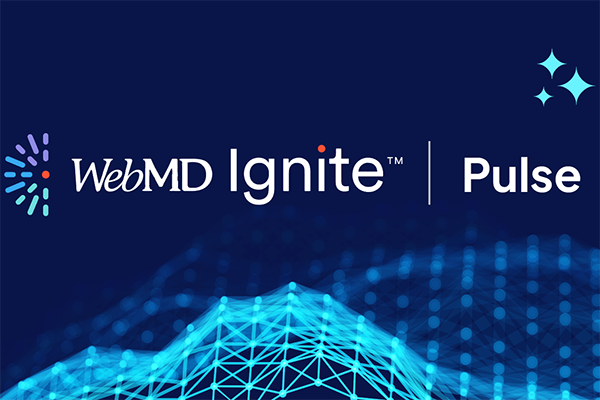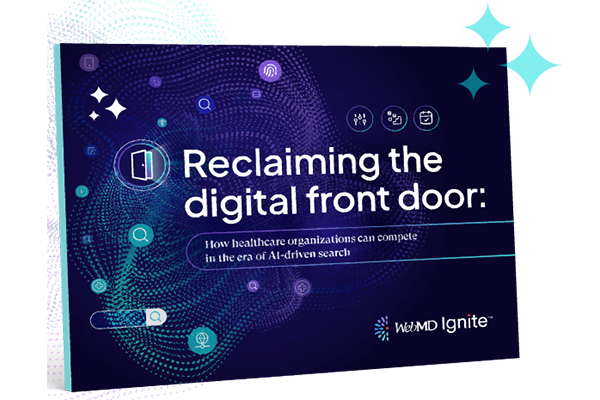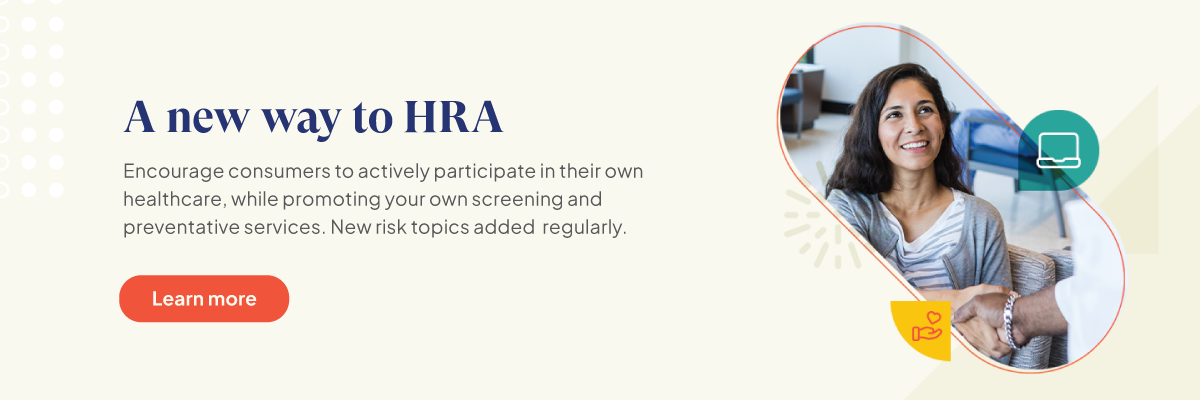3 CTAs to improve healthcare digital marketing ROI

Categories: health plans, health systems, healthcare organizations, associations
Today’s health consumer is far more selective when choosing a healthcare provider, and rightfully so. They’ve become tactical in their decision-making process, spending more and more time browsing websites, reading reviews, and learning about their symptoms, well before scheduling an appointment.
As a result, websites and campaigns not only need to promote awareness and drum up high-quality leads, but they also need to get those leads in the door. Every element of the digital experience should encourage immediate engagement: Websites must be mobile-optimized, facility phone numbers must be obvious, and landing pages must command action.
Types of calls-to-action (CTAs)
One simple way that healthcare marketers can step up their lead-gen game is by varying the types of CTAs used on landing pages, emails, and social media ads — and making those CTAs obvious. “Soft” CTAs ask visitors to perform a quick or low-risk action, such as “Calculate your BMI”. This type of CTA is more effective for nurturing consumers in the earlier stages of the funnel. A “hard” CTA is best for consumers further down the funnel, those already familiar with your brand and actively seeking a provider. “Schedule an appointment” is the most common example.
And while the “Schedule an appointment” CTA has a time and a place, forward-thinking organizations recognize the need for a “softer sell”. As a result, they’re increasing the variety of CTAs used on digital channels and providing a wider range of resources to cater to all stages of the health journey.
3 CTAs to improve marketing ROI
Most first-time site visitors aren’t ready to book an appointment when they come across your health content library or in-person seminar. By tailoring your CTAs to each stage of the pipeline, prospects are more likely to remain engaged — and your healthcare marketing campaigns will see overall improved performance.
To help you get started, we came up with three valuable CTAs to consider for your digital campaigns:
1. “Take the assessment”
Assessments and surveys are excellent tools to engage consumers because they offer an immediate, personalized “reward” — information about the user’s health that precludes a diagnosis. The most common type is an HRA, or health risk assessment.
HRAs are incredibly effective for generating awareness and engaging consumers who aren’t yet “in the market” but want to learn more about their symptoms or risk. They can be built into a service line landing page, included as part of a social media campaign, or used as a conversion tactic within an e-newsletter or email drip campaign. Since the data collected is non-clinical and involves only self-reported symptom evaluation, there’s less concern around privacy and security — but still plenty of valuable information (including lead qualification metrics) that can be used to more precisely target audiences and increase campaign performance.
2. “Request a second opinion”
This is a powerful CTA because it hands the healthcare reins back over to the consumer, urging them to seek a better outcome for a diagnosis rather than accepting it at face value. It’s bold, actionable, and not only empowers consumers who come across your website — it implies authority in the service line and subtly positions your brand ahead of your competition. When coupled with an informative resource or patient success story, this CTA has the potential to convert patients who were previously loyal to another healthcare provider or may be “splitting” their care.
It’s important that the resource leading to the CTA is compelling, factual, and highlights the complexity of the diagnostic process for whichever disease or condition you’re targeting. It is most effective when coupled with a call center-integrated campaign, where information gathered is funneled into a healthcare CRM and prompts future action.
3. “Reserve your spot”
Educational seminars and workshops are fantastic for building trust and increasing community awareness for your providers and services. A traditional seminar CTA might read: “Sign up for free” or “Register today.” While these both get the point across, they do little to convey a sense of urgency or value. “Reserve your spot,” on the other hand, is an underutilized but higher-performing CTA because it implies that space is limited and, therefore, the event is valuable and sought-after.
This CTA should be coupled with a digital booking interface so interested visitors can easily sign up without getting on the phone (however, always provide a phone number that registrants can call for more information). It is suitable for landing pages, email, and social media — but should always be followed with an email nurture campaign regardless of where the lead was captured. Make sure these emails are personalized based on the information the individual has provided, and that they continue beyond the date of the event.
To sweeten the deal, some marketers may choose to include a free resource or downloadable asset (such as a brochure) that the user can access immediately upon registration for the seminar. This kind of educational resource not only encourages action — it increases the chances that the registrant will remain engaged and gives them a little more background information to help them prepare for the seminar.
Final thought
The most impactful CTAs for healthcare marketing all have something in common: they provide a valuable reward or result, imply a degree of urgency, and give the healthcare provider a position of authority. When building out your digital engagement strategy and lead gen campaigns, make sure to spend plenty of time refining your CTAs and creating informative, educational resources that support them. Today’s patients are busy — they won’t take the time to fill out a form or complete a survey if there isn’t an immediate and obvious reason to do so.





